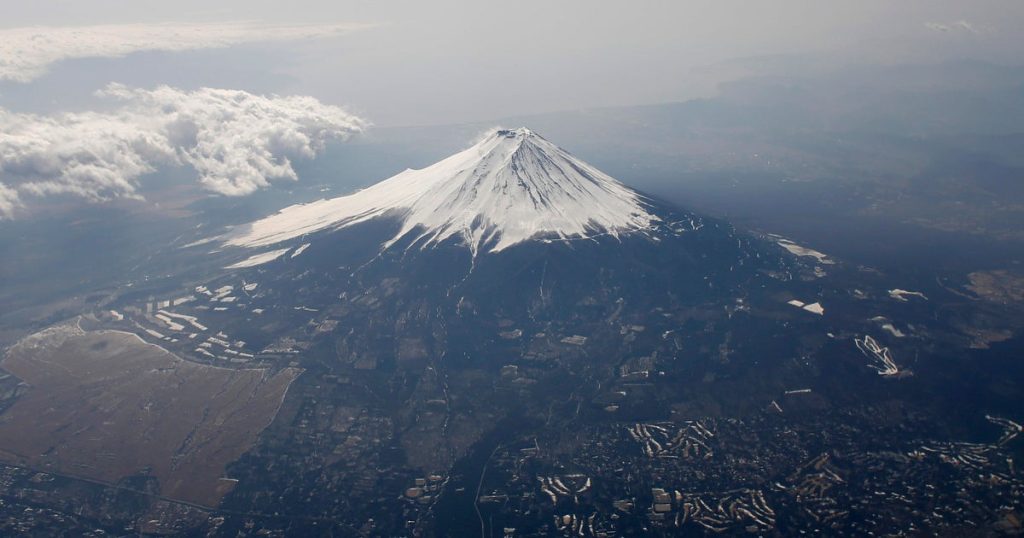A dramatic series of events unfolded on Japan’s iconic Mount Fuji, where a 27-year-old Chinese student faced multiple rescues within just days. After suffering from altitude sickness during his first climb, he returned to the mountain days later to recover belongings, only to fall ill again. These incidents have ignited discussions on the safety of off-season climbing and the responsibilities of hikers on the revered mountain.
| Article Subheadings |
|---|
| 1) The First Rescue: A Call for Help |
| 2) A Return to Danger: The Second Rescue |
| 3) Public Reactions and Social Media Outcry |
| 4) Safety Concerns and Climbing Regulations |
| 5) Mount Fuji: A Cultural Landmark and Its Challenges |
The First Rescue: A Call for Help
On April 22, a 27-year-old Chinese student living in Japan made an emergency call from near the peak of Mount Fuji, reporting symptoms indicative of altitude sickness. This distressing call led to a helicopter rescue, which brought him to safety after he encountered severe health issues at nearly 10,000 feet above sea level. Police officials indicated that his climbing equipment, notably his climbing irons, were damaged during this initial ascent. The swift response of the authorities illustrates the risks associated with mountain climbing, especially in a region known for its challenging conditions.
A Return to Danger: The Second Rescue
Just four days after his first ordeal, the climber surprisingly returned to the Fujinomiya trail on Mount Fuji, reportedly to recover his lost belongings, including a cell phone he left behind. Tragically, he fell ill again and was discovered unable to move by another climber. Authorities had to intervene once more, suspecting altitude sickness. Following his rescue, he was transported to a local hospital for medical evaluation. The circumstances of his return raised questions about the decision-making processes of hikers and their awareness of the potential risks involved in climbing by oneself, especially in off-peak seasons.
Public Reactions and Social Media Outcry
The incident sparked widespread debate on social media platforms, where many expressed frustration regarding the student’s decision to attempt a climb shortly after his first medical emergency. Commenters lamented the potential misuse of rescue services, suggesting that there might be a need for stricter regulations to deter similar behavior in the future. Some voices argued that hikers who incur unnecessary rescues should bear some responsibility, implying that penalties might be warranted for situations like this one. The discourse has highlighted an ongoing concern: balancing public safety with personal freedom in outdoor activities.
Safety Concerns and Climbing Regulations
Officials from the Shizuoka prefecture reiterated their safety warnings against climbing Mount Fuji during the off-season. They reminded hikers that conditions can change abruptly, rendering rescue efforts more complicated and hazardous. Hospitals and medical facilities operating along the trails are closed outside the designated climbing season, which typically runs from July to early September. This lack of available medical support underscores the inherent dangers that climbers face during unsupported times outside the official climbing window.
Mount Fuji: A Cultural Landmark and Its Challenges
Mount Fuji, Japan’s highest peak at 3,776 meters (12,388 feet), holds immense cultural significance and was recognized as a UNESCO World Cultural Heritage site in 2013. Initially a pilgrimage destination, it has grown in popularity as a hiking location in contemporary times. Local authorities have taken steps to manage this influx of visitors to prevent overcrowding and the risks associated with high volumes of climbers on the mountain. An entry fee and the capping of climber numbers on popular trails were introduced in response to safety concerns and environmental sustainability. Further measures are being discussed for implementation on other main trails to ensure the conservation of this iconic natural resource.
| No. | Key Points |
|---|---|
| 1 | A Chinese student was rescued from Mount Fuji twice within a week due to altitude sickness. |
| 2 | The student returned to the mountain to find his belongings but faced health complications again. |
| 3 | Public sentiment on social media expressed outrage over the potential misuse of mountain rescue services. |
| 4 | Officials warned against climbing during off-season due to changing weather and closed medical facilities. |
| 5 | Mount Fuji faces challenges related to visitor management and maintaining its cultural integrity. |
Summary
The dramatic rescues of the climber on Mount Fuji serve as a critical reminder of the dangers inherent in hiking, particularly during the off-season when conditions are unpredictable. This situation emphasizes the need for responsible climbing habits, greater awareness of personal safety, and a conversation surrounding the implications of rescue practices. As discussions continue about regulations and safety measures, the preservation of Mount Fuji as a cultural and natural icon remains a paramount concern for both authorities and residents alike.
Frequently Asked Questions
Question: What are the main risks associated with climbing Mount Fuji?
The primary risks include altitude sickness, sudden weather changes, and inadequate medical facilities during the off-season.
Question: What are the designated climbing months for Mount Fuji?
The official climbing season for Mount Fuji is from July to early September.
Question: What measures are in place to manage climber numbers on Mount Fuji?
Authorities have implemented entry fees and caps on the number of climbers on popular trails to address overcrowding and enhance safety.


